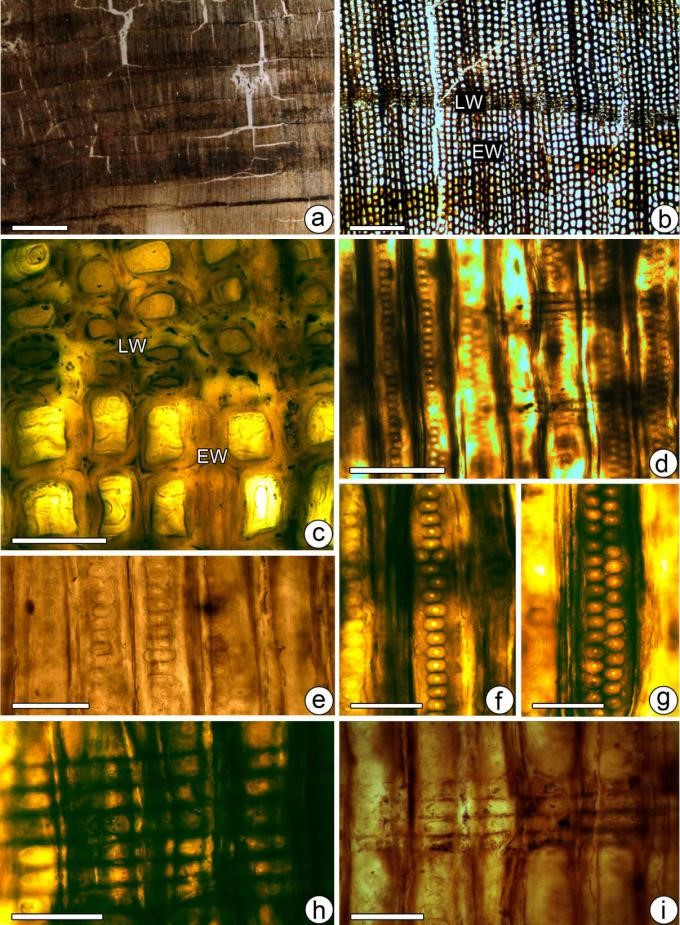Fossil wood is among the significant proxies for terrestrial paleoclimate and paleogeographical reconstruction in Earth history. Abundant and diversified Mesozoic fossil woods are well recorded in China; however, Triassic fossil wood is rare.
A Sino-French research team leading by Prof. WANG Yongdong from Nanjing Institute of Geology and Palaeontology, Chinese Academy of Sciences(NIGPAS) have found a new fossil wood from the Late Triassic Xujiahe Formation (Norian to Rhaetian) in Guangyuan of northern Sichuan Basin, southwestern China (dated to ca. 200 Ma). The fossil wood material consists of two well-preserved specimens yielding secondary xylem with distinct growth rings. Bordered pits on the radial tracheid walls are mostly contiguous, biseriate alternate, locally uniseriate and strongly flattened. Cross-fields show a large window-like pore. This anatomy is typical for an important fossil wood morphogenus Xenoxylon Gothan. Based on a novel combination of radial and cross-field pitting type and ray height, a new species, Xenoxylon guangyuanense sp. nov. is recognized.
The finding of this new fossil wood taxon contributes to a better understanding of the yet poorly documented Xenoxylon early radiation during the Late Triassic. This study was conducted by Dr.TIAN Ning (Shenyang Normal University), Prof. WANG Yongdong and Dr. LI Liqin from NIGPAS, Dr. Marc Philippe from University of Lyon 1, France, as well as other experts from Qufu Normal University and Chinese Academy of Geological Sciences, Beijing.
Xenoxylon is a paleobiogeographically significant conifer genus, which is considered to be an index for the cooler and/or wetter climates of Northern Hemisphere throughout theLate Triassic–Late Cretaceous range. The occurrence of Xenoxylon in the Sichuan Basin of southern China may indicate a short-term cooling event episode, sandwiched within a period during which warm and wet climate conditions largely prevailed over lower latitude regions of the Northern Hemisphere. Such a cooling event in the Sichuan Basin which was located at a low paleolatitude on the eastern rim of Tethys may be in accordance in time with the temperature decline event in Norian–Rhaetian boundary uncovered by oxygen isotope (δ18O) record in Italy of the western rim of Tethys.
This study is jointly supported by the State Key Programme of Basic Research of Ministry of Science and Technology, China, National Natural Sciences Foundation of China, Innovation Project of CAS and the funding from State Key Laboratory of Palaeobiology and Stratigraphy (NIGPAS).
Related information: Tian N, Wang Y D*, Philippe M, LiLQ, XieXP, JiangZK, 2016. New record of fossil woodXenoxylonfrom the Late Triassic in the Sichuan Basin, southern China and its palaeoclimatic implications.Palaeogeography, Palaeoclimatology, Palaeoecology, 464: 65-75(*corresponding author).

Anatomical structures of Xenoxylon guangyuanense sp. nov. from the Upper Triassic of the Sichuan Basin, showing growth rings, trachrids and cross-field pitting
Download:
